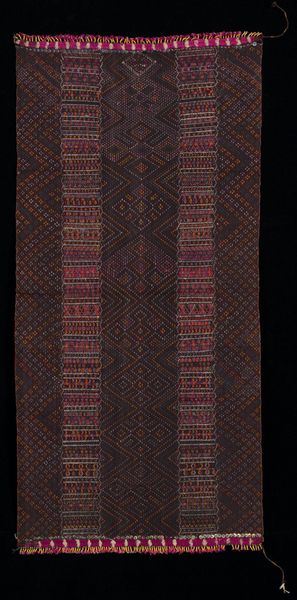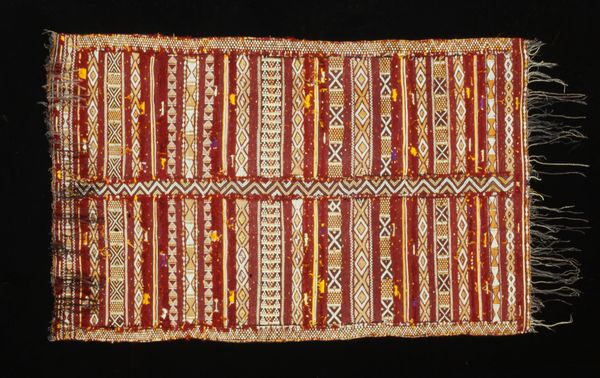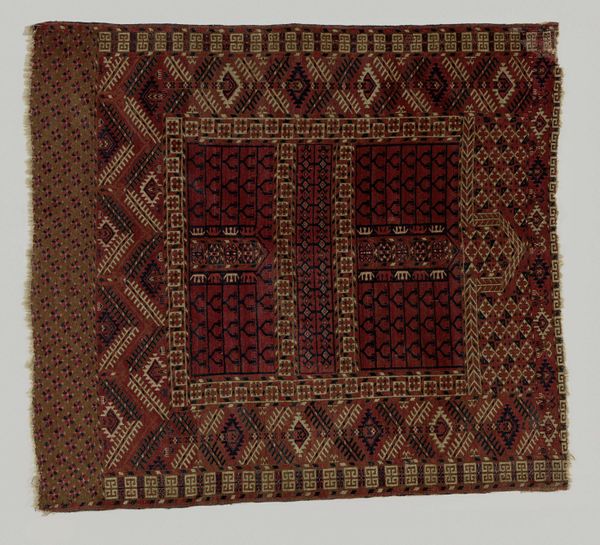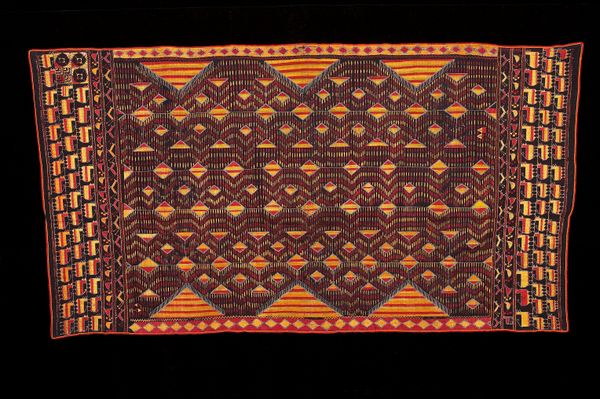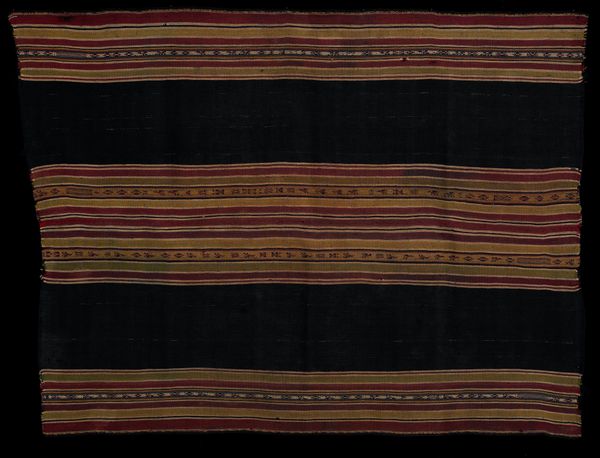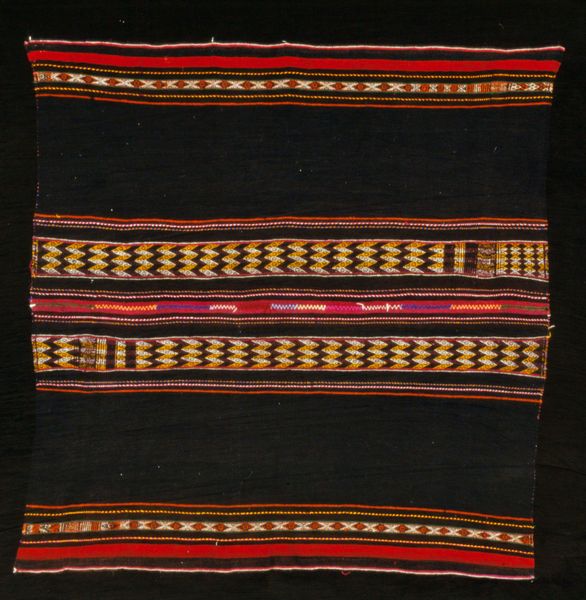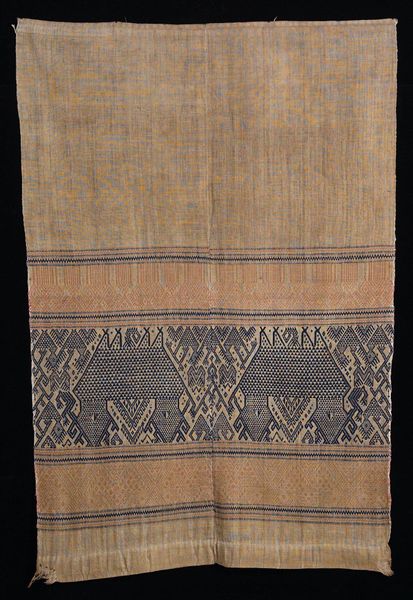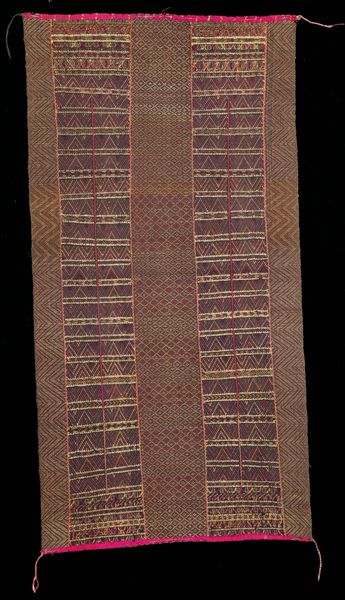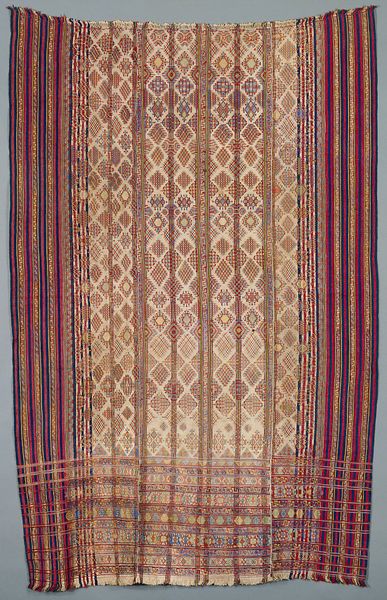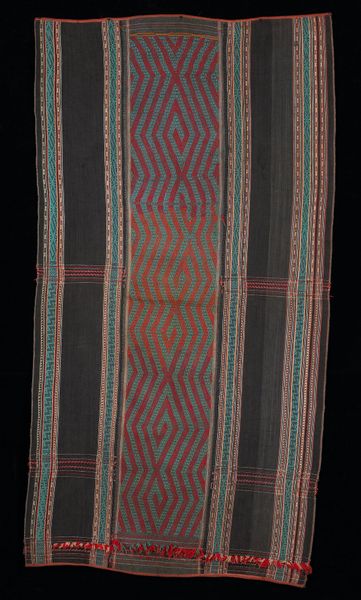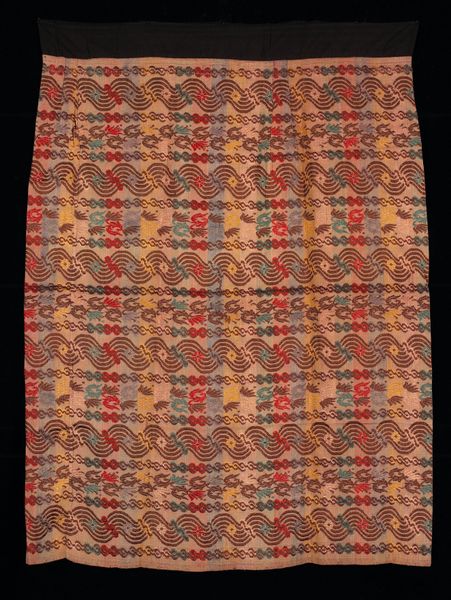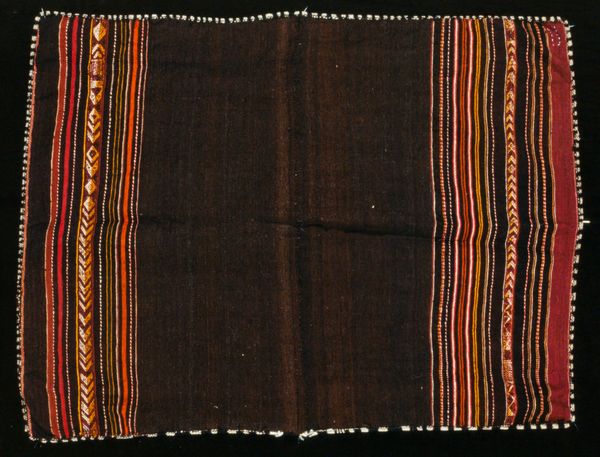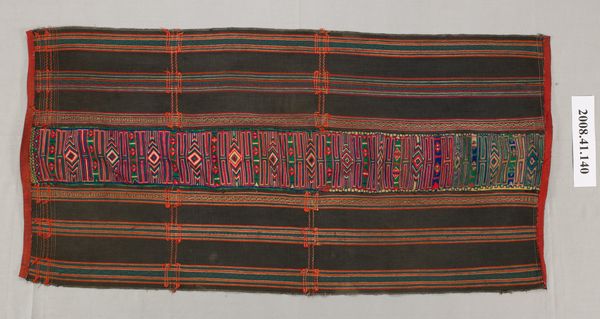
Ceremonial textile (Chagsi Pangkheb) c. early 20th century
0:00
0:00
fibre-art, weaving, textile
#
pattern heavy
#
tribal design
#
natural stone pattern
#
fibre-art
#
asian-art
#
weaving
#
textile
#
geometric pattern
#
hand-embroidered
#
geometric
#
repetition of pattern
#
regular pattern
#
pattern repetition
#
beaded
#
layered pattern
Dimensions: 87 1/4 x 32 1/8in. (221.6 x 81.6cm)
Copyright: Public Domain
Editor: Here we have a "Ceremonial Textile," or "Chagsi Pangkheb," created around the early 20th century. It's currently housed here at the Minneapolis Institute of Art, comprised of fiber art, including silk and cotton weaving. It really strikes me as a sophisticated geometric abstraction. What stands out to you from a formalist perspective? Curator: Immediately, the symmetrical composition compels my attention, along with the intricate patterns meticulously woven. Consider how the central diamond motif serves as a focal point, balanced by the flanking vertical panels with their differing yet harmonizing designs. The varying textures, arising from the weave itself and perhaps additional embroidery, are vital too. Editor: The patterns are really dense; almost dizzying with repetition! It's so methodical; how do you break down all these visual components? Curator: Method is precisely the right word. Attend to the structural organization: horizontal bands grounding the composition and subdividing the vertical columns. Observe the interplay of positive and negative space created by the interwoven shapes. The colours, subtle yet distinct, define forms and rhythms. Ask yourself: what kind of relationship exists between the bands and the geometry inside the composition? How is the surface articulated with tone, texture and mark? Editor: I see the dialogue between colors and the relationships they establish, but why focus solely on what's inside the borders of the textile itself? Can't we think about how it was used? Curator: Contextual analysis undoubtedly holds merit. However, a formalist reading prioritizes the internal logic of the artwork. How line, shape, color, and texture coalesce to form meaning through its inherent visual language. By bracketing out external influences, we encounter the very essence of design. Editor: I suppose there's a real purity in studying just what's visually present and how it interacts. It feels much more…contained somehow. Curator: Precisely. Focusing on pure form gives rise to understanding that will necessarily exist independent of extrinsic factors like cultural norms. Editor: That's a really illuminating lens. I feel like I’m really beginning to appreciate all the work that goes into analyzing the design elements themselves.
Comments
No comments
Be the first to comment and join the conversation on the ultimate creative platform.
